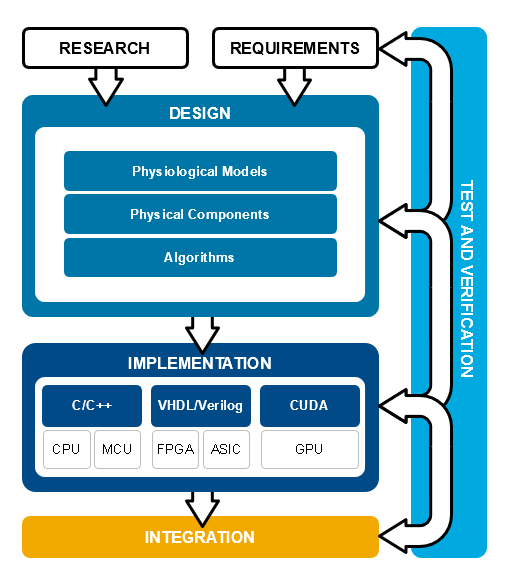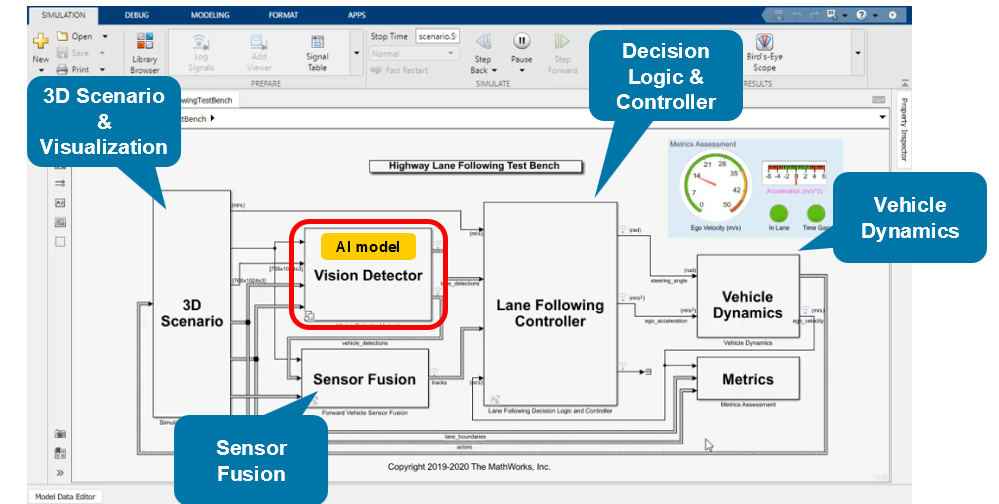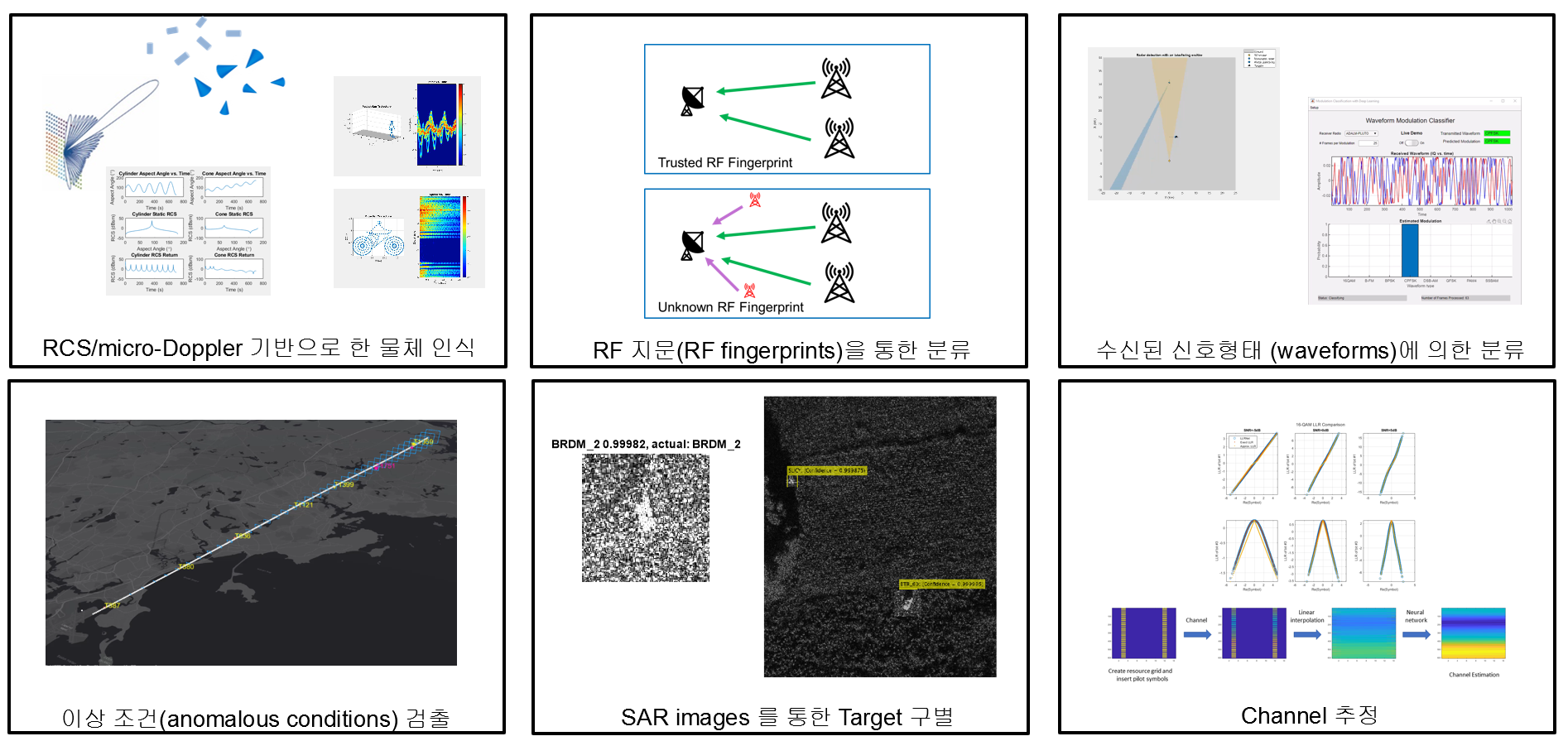인공지능이 산업 전반에 융합하고 있다. 전자파 분야에서도 AI를 적용하려는 시도가 활발한 가운데 AI의 전파 융합에 대한 인사이트를 탐구하는 ‘전자파와 AI’ 시리즈를 통해 관련 기술·산업·트렌드 등을 조망했다. 이번 연재에서는 매스웍스코리아 김영우 전무를 만나 모델기반설계의 중요성에 대해 들어봤다.
“시스템 복잡할수록 모델기반설계 중요성 ↑”
모델기반설계, 전자·기계·SW 엔지니어 소통 원활
AI Chat Playground로 MATLAB 진입 장벽 ↓
Simulink를 통한 AI Mode system 시험 및 검증
[편집자주] 인공지능이 산업 전반에 융합하고 있다. 전자파 분야에서도 AI를 적용하려는 시도가 활발한 가운데 AI의 전파 융합에 대한 인사이트를 탐구하는 ‘전자파와 AI’ 시리즈를 통해 관련 기술·산업·트렌드 등을 조망했다. 매스웍스는 △금융 △로봇 △산업자동화 △자동차 △국방항공 △바이오 △기계 △반도체 등 산업 전반에서 솔루션을 제공하고 있으며, 130여가지 툴을 갖춘 매틀랩과 시뮬링크로 널리 알려져 있다. 산업 전반에서 기술 솔루션을 제공하고 있는 매스웍스코리아 김영우 전무를 만나 AI 시대 전파 융합과 산업 트렌드에 대한 이야기를 들어봤다.
 ■ 매스웍스서 오랫동안 일하셨다. 매스웍스에서의 경험은 어떠한가
■ 매스웍스서 오랫동안 일하셨다. 매스웍스에서의 경험은 어떠한가
삼성전자에서 19년 정도 근무하고 인텔 코리아 R&D Center를 거쳤다. 무선통신 분야에서 프로젝트를 주로 수행했다. 이후 매스웍스 코리아에서 현재까지 17년을 함께하고 있다.
이전에 몸 담았던 곳은 개발팀이었던 반면 이곳은 기술 응용 서비스팀에 가깝다. 그간 경험했던 무선통신 분야에서 벗어나 다양한 산업 분야를 경험하면서 고객의 문제와 고충을 직접확인해볼 수 있다는 것이 매력이다.
예컨대 고객의 연구 개발 과제 진행 시, 고충은 무엇인지, 설계 및 양산 과정에서 우리가 향상시켜줄 수 있는 부분이 무엇인지를 가이드해주고 컨설팅과 트레이닝을 지원하는 역할을 수행한다.
■ AI 시대에 발맞춰 매스웍스 플랫폼도 발전하고 있다. 과거와 달리 오늘날의 산업 트렌드적인 면에서 매스웍스를 더욱 필수불가결하게 만드는 요소는 무엇인가
자동차 산업의 예를 들자면, 자동차에필요한 소프트웨어 라인 수는 2000년대 100만 라인에서 오늘날에는 1억 라인을 초과하고 있다. 자율주행 시스템을 구동하기 위해선 최소 5억 라인 이상 탑재가 예상된다.
이러한 현상이 의미하는 바는 수많은 소프트웨어 라인을 검증해야 하고 라인 수가 증가하는 만큼 휴먼 에러 우려가 비례적으로 높아지게 된다는 것이다. 특히 자동차는 인간이 직접 탑승해 편의가 제공되는 만큼 시스템 문제는 자칫 생명 문제로 직결될 수 있어 기능안전이 무엇보다도 중요하다.
드론, 자율주행, 무인항공기 등의 최첨단 제품은전자·기계·소프트웨어가 융합하고 여기에 주변을 인지하는 AI 기능이 추가되어 시스템 복잡해지고 있고 이로 인해 팀 협업이 쉽지 않은 부분을 부인할 수 없다.
이에 모델기반설계가 개발시간 단축 및 비용 절감과 적기 출시를 이끌어낼 수 있다. 기존의 전자·기계·소프트웨어를 개발 시 설계 워크플로우는 설계요구사항을 문서로 하여 각각의 팀에 분배하고, 각각의 담당 개발자는 각각의 툴로 개발하게 된다. 이럴 경우 설계사양서의 기술된 요구사항이 애매모호 할 경우도 있고, 시스템적으로 실현 불가능 경우가 발생할 수가 있다.
또한 이러한 잠재적인 문제는 전자 기계 소프트웨어를 마지막 통합 시험 단계에서 대부분의 오류를 발견하게 된다. 수정-재설계가 반복될수록 개발자는 번아웃이 오고 기업은 인적·물적·시간적 리소스에서 과도한 소모가 발생한다
시스템이 복잡 해질수록 수정 재설계를 최소화 할 수 있는 모델기반설계로 나아가야 하기에 매스웍스 플랫폼이 점차 확장되고 있는 것이다.
■ 모델기반설계가 왜 중요한가
우주항공 및 자동차 산업에서 시작하여 모델기반 설계로의 표준화 설계 및 개발 워크플로우가 정착되어가고 있으며 이러한 경향은 모델기반설계가 산업계 보편화되는 상황을 맞이했다.
전자·기계·소프트웨어가 각각의 툴(Tool)이 아닌, 통합된 모델로 시스템을 구성하게 되면, 초기 설계에서 수행 가능한 통합된 시스템 시뮬레이션을 통해 시스템 요구사항 검증이 가능하다. 또한 최적화 기능을 활용하여 시스템 설계의 변수 요소를 시스템 요구사항에 맞는 최적화된 시스템 설계가 가능하게 된다. 이러한 이유로 현재 많은 기업들이 모델기반설계를 통해 제품 개발에서의 효율을 도모하고 있다.
또한 모델기반설계는 하나의 모델이 완성됐을 때 이 모델을 다른 관련 제품설계에서도 재사용할 수 있다는 점이 특징적이다. 이 모델만 있으면 자동코드 생성기능을 통해, C/ C++ 코드 및 HDL (Hardware Description Language)인 VHDL, Verilog, 또한 GPU coder를 이용하여 CUDA 등을 생성할 수 있으며, 이러한 이유로 선도기업들은 이러한 모델을 중요 자산으로 여긴다.
이러한 자동코드 생성이 가능한 것은 강력한 검증 기능에 있으며, 요구사항과 모델, 또한 모델에서 자동 코드생성에 이르기까지 추적성이 확보되어야만 가능한 것이다
▲모델 기반 설계 구성도
특히 전문 분야가 다른 전자·기계·소프트웨어부서 엔지니어 간 소통은 통합 된 모델 기반 설계를 통해 더욱 원활할 수밖에 없다.
■ Chat GPT가 전자파 설계, 분석에서 자리 잡을 것이란 이야기가 있다. 이에 대해 어떻게 보는가
좋은 기회라고 생각한다. MATLAB은 지금 현재도 오픈AI 기반 AI Chat Playground를 구축해 제공하고 있다. 2023년 5월경 최초 출시됐으며 지속 업데이트해 기능을 개선하고 있다.
AI Chat Playground는 MATLAB 코드 초안을 생성하고 사용자의 질문에 답할 수 있다.
향후 미래에는 자연어를 통해 MATLAB을 사용할 수 있는 시대가 오지 않을까 조심스레 생각해본다. AI Chat Playground의 출시로 사용자 진입장벽을 낮추는 효과들을 기대하고 있다.
MATLAB을 기반으로 한 매스웍스 툴은 130종류가 넘는다. 잘 쓰는 엔지니어들도 있겠지만 가령 엔지니어가 MATLAB을 간헐적으로 사용한다면, 사용법이 기억나지 않거나 기능 구현에 어려움을 겪을 수 있는데 Chat GPT의 등장이 이러한 진입장벽을 낮춰준다.
또한 매스웍스는 전문 트레이너를 통해 다양한 교육과정을 구비하고 있고 이러한 교육과정과 연동하여 한 층 심도 있는 서비스가 가능하다고 생각한다.
개인적으론 향후 컨셉만 가지고 Chat GPT에 명령을 내려 알고리즘, 프로그램을 짜는 시대를 기대하고 있다.
■ 전자파 분야에서 AI 융합은 어떤 식으로 진행되고 있나
무선 시스템에 가장 큰 허들이 뭐냐하면 바로 눈에 보이지 않는다는 점이다. 눈에 보여야 지도학습을 할 수 있는데 눈에 보이지 않는 무선 시스템을 학습시킬 수 있는 방법은 오직 시뮬레이터뿐이다.
시뮬레이터 혹은 디지털 트윈으로 데이터를 받아서 가상의 AI 모델(Model)을 만들고 이것을 실제 현실에서 작동이 얼마나 일치하는지를 검증해나가게 된다. 이러한 AI 모델은 Simulink 및 MATLAB과 연동해 무선 시스템 레벨 시뮬레이션(System Level Simulation)이 가능하게 된다.
▲Simulink를 통한 AI Mode system 시험 및 검증 예
우리가 만약 드론을 만든다고 하면 버추얼 센서가 탑재된 드론으로 가상의 장면을 먼저 만든다. 해당 드론에는 카메라, 레이더, 라이다 등 가상 센서가 동작하고 있다. 이 시스템 위에 AI 모델을 올려 얼마나 정상 작동하는지를 가상의 공간에서 미리 확인해 볼 수 있다는 것이다. 이것이 저희 플랫폼의 장점이라고 생각한다.
RF와 레이더도 마찬가지로 AI 모델을 적용할 수 있다. AI 모델이 있을 때 그것을 만드는 것으로 끝나는 게 아니라 시스템상에서 확인을 해야 한다. 매스웍스 제품은 다양한 예제를 고객의 니즈에 충족하기 위해 출시하고 있으며, 시뮬레이터상에서 추출한 이미지 데이터를 이용하여 각종 AI 솔루션을 제공하고 있다.
▲전자파 분야의 AI 응용 예
■ e4ds news 독자분들께 마지막으로 한 말씀
시스템이 점점 복잡해지고 있다. 4차 산업 니즈가 커지고 디지털 엔지니어링이 주목 받는 이때 문제 해결과 접근법에서 새로운 방안을 찾아야 할 시기라고 본다.
생산성을 향상하고, 휴먼 에러를 줄이며, 가상 환경에서 시뮬레이션을 통해 검증 효율성을 제고하는 등 복잡해지는 시스템에서 인프라를 갖춘 곳과 아닌 곳 사이의 갭은 점차 커져갈 것이다. AI라는 것도 하나의 시스템 요소에 불과하다. 이를 시스템과 연동할 때 인프라를 갖춘 곳과 아닌 곳 사이의 차이를 염두에 두길 바란다.
감사합니다.


